The unbridled imagination of Erté
Erté has been bestowed many names, from “The Father of Art Deco” to “The Genius,” yet he remains one of the least-known artists and designers from the last century. It’s a shame because he has an impressive oeuvre, spanning eight decades of creations in fashion, art illustration, graphic design, and costume and set design in theater and film.
His work has inspired designers like John Galliano and our very own Ezra Santos, who has always “adored him and his Art Deco influences from the ’20s to the ’60s,” channeling him in his couture creations. The present generation can easily identify with Erté because he lived in the moment and kept his sense of wonder. He once said, “Monotony engenders boredom, and I have never been bored in my life.”

His chosen path was not what his parents had in mind. Born Roman Petrovich Tyrtov in St. Petersburg in 1892, he had a distinguished lineage from a Tatar khan through his father, a naval officer who wanted his son to follow in his footsteps at the Imperial Russian Navy. But he had no inclinations for the military, already designing a dress for his mother at age five, an early start for a long career in fashion and the arts.

At age 14, he moved to Paris where he enrolled at the Academie Julien to pursue fashion and stage design. To avoid upsetting his father, he changed his name to Erté, the French phonetic pronunciation of his initials. Theater fascinated him but he eventually concluded that he could live without dancing but could not give up his passion for painting and design. The performing arts would later inform and enrich his creations and he would work in that world as well. A sculpture done at age 15, “Demoiselle à la balancelle,” has the sinuous Art Nouveau lines that recall the graceful movements of ballerinas that he admired.

His unbridled imagination proved too eccentric for some, like the couturier “Carolyn,” who dismissed him after a few sketches, advising, “Young man, do anything in life but never try to be a costume designer again.” It was the King of Fashion, Paul Poiret, who appreciated his talent and hired him in 1913. Here, Erté honed his couture skills, which he also applied to costumes for theater where he designed for Mata Hari, the Dutch exotic dancer and courtesan of World War I spy fame, and where Sergei Diaghilev asked him to create costumes and sets for the ballet Sleeping Beauty.

With the war putting an end to the Belle Epoque, Erté found refuge in Monte Carlo and began to set his eyes on America, leading to a long-term contract with Harper’s Bazaar where, as art director and illustrator, he changed the trajectory of fashion, portraying the modern woman wearing exuberant and vibrant outfits that redefined glamour and reflected newfound freedom and love of spectacle in early 20th-century society.

His arabesques and straight lines were the antithesis to Victorian fashion, heralding a new era of a woman liberated from constraints and decorum—independent, with short hair, who smoked, drove, and engaged in sports. Working for 22 years and designing more than 240 magazine covers, his illustrations have become collectibles as outstanding works of graphic art and quintessential art deco masterworks.
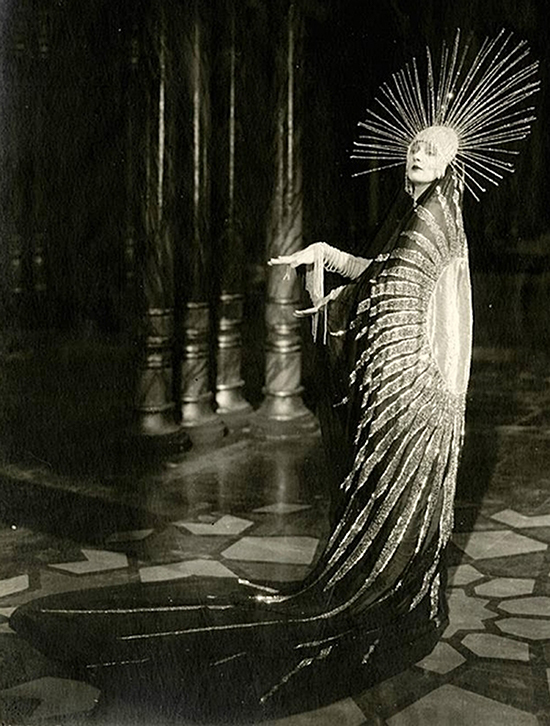
Gowns covered in crystal and pearls and velvet evening wraps with Chinese sleeves and gold embroidery became popular, while his simple, vertical lines and unisex clothes were bestsellers in New York department stores like Henri Bendel. His costumes and sets were in every theater, from Broadway and the Ziegfeld Follies in New York to the opera in Chicago.
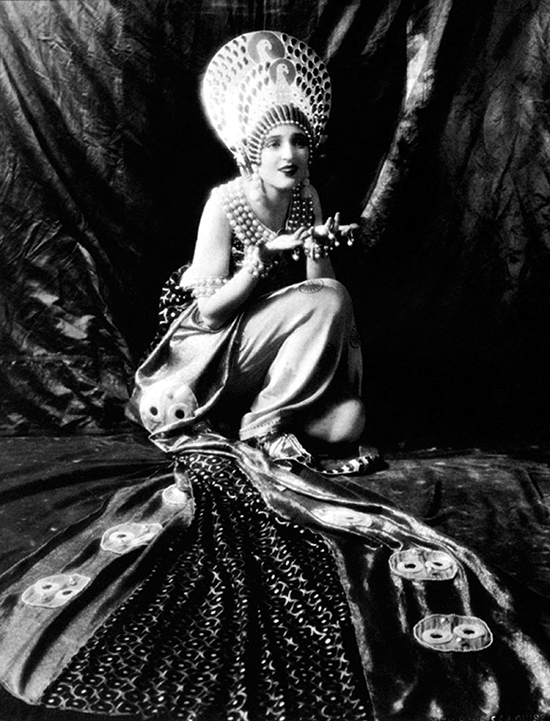
Hollywood also adopted Erté, whose first film was 1922’s The Restless Sex starring Marion Davies, who headed a cast dressed as gods and goddesses of foreign lands. Many movies followed, including the epic 1925 Ben-Hur with Carmel Myer’s cult peacock costume. He dressed the famous actresses of the day, including Joan Crawford, Norma Shearer and Aileen Pringle.
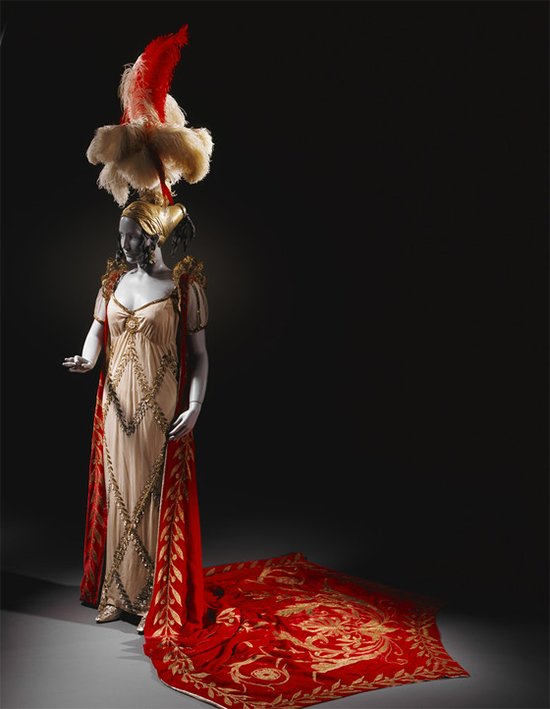
Arguments with actresses and impossible deadlines, however, made the designer return to France, where he fell on hard times in the late 1930s when he had to sell his house, dismiss the servants and move to a small apartment. He made a comeback in the 1960s, thanks to the hippies who rediscovered his arabesques and mythological figures that became inspiration for the psychedelic movement, which used them in concert posters.
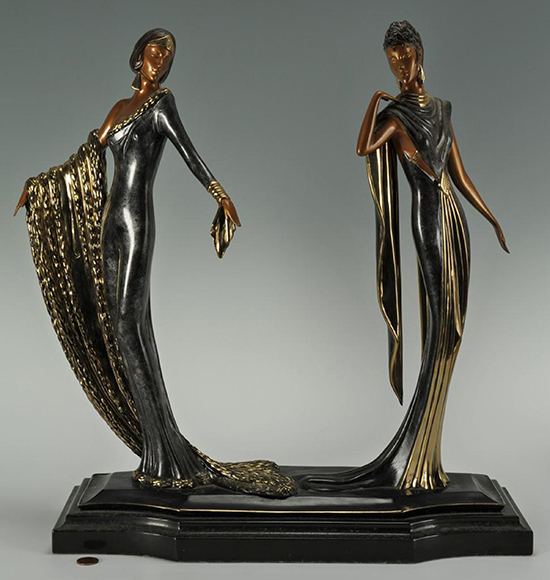
He even had a retrospective at the Grosvenor Gallery in New York and the Metropolitan Museum bought all 170 works even before the exhibit opened. His Alphabet series, which he started in 1927, was also completed and successfully released. He designed the show for Montreal’s Expo 67 and made a triumphant return to theater by dressing Ginger Rogers and Zizi Jeanmaire. Aside from opera and ballet work, he created serigraphs and bronze sculptures during this renaissance period, which lasted till his death in 1990.

His legacy lived on, from Yves Saint Laurent’s 1976 Ballet Russes and John Galliano’s 1998 collection for Dior, to Karl Lagerfeld’s 2010 resort wear for Chanel. London-based Michael Halpern, who discovered Erté’s work among his parents’ books, was enthralled by how the designer “had things morph into others—animals that become fish, that become trees—and every time you look at it you see a different color.”
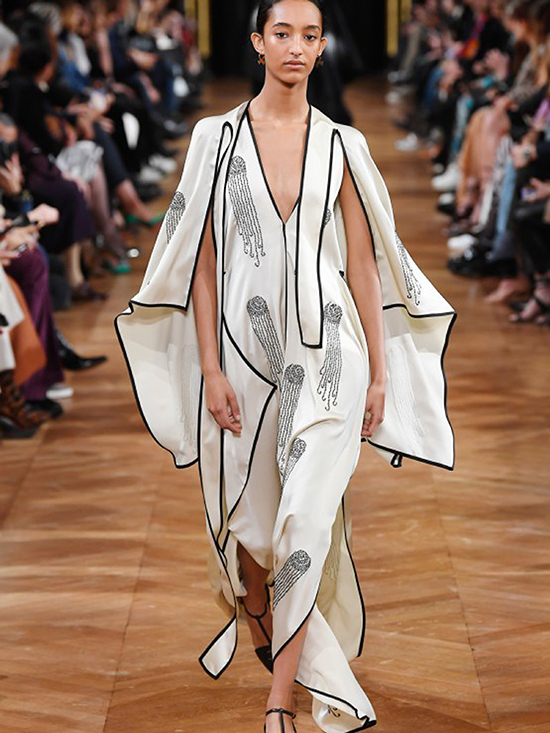
His art-obsessed mother who ran away from New York in the middle of the night in 1969 to go to Paris to find Picasso, would ask him when he was a child why he gravitated to Erté. “It was the fantasy about it,” he answered. “It was so crazy to have a snake growing into a tree. It seemed so nonsensical and that made me happy. I love to look at it still; the honest way Erté worked was just so beautiful.”
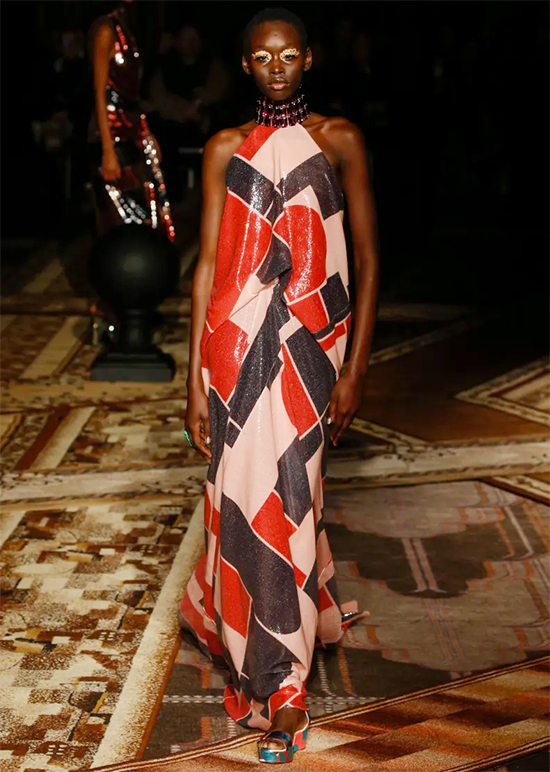
Despite his links to Art Deco, Erté never wanted to be pigeonholed: “I do not belong to one of the art schools, the particular style of my drawings is an instrument for the expression of beauty of images. In art, I’m an individualist.”


